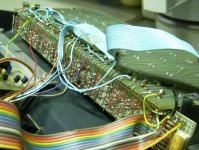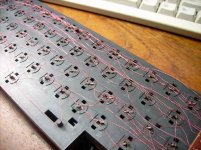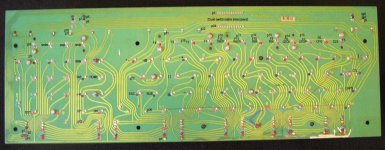RickNel
Veteran Member
I've hooked the switch matrix of an old ANSI serial terminal up to an Intel PS/2 keyboard controller, and need to make custom translations from the resulting scancodes to standard PS/2 ANSI input. Its for a terminal simulation project I described in the "Other" genre, which may not be frequented by many programmers.
I know about ANSI.SYS translate commands, but it seems kind of brute-force to run a separate boot-time command for each individual key combo, so I'm looking for advice on how to create a non-standard codepage that can be loaded with one command at boot. If a custom codepage handles the one-for-one key combo translations, I can use ANSI.SYS for the ansi escape sequences on the various special function keys.
If there is no "official" way to customize a codepage, I suppose I could consider hacking into one of the standard codepages with a debugger and making 100+ changes - though that does not appeal. I can work with Assembler if necessary, but would prefer an application-level customizing tool if such a thing should exist.
Any advice welcome..
Rick
I know about ANSI.SYS translate commands, but it seems kind of brute-force to run a separate boot-time command for each individual key combo, so I'm looking for advice on how to create a non-standard codepage that can be loaded with one command at boot. If a custom codepage handles the one-for-one key combo translations, I can use ANSI.SYS for the ansi escape sequences on the various special function keys.
If there is no "official" way to customize a codepage, I suppose I could consider hacking into one of the standard codepages with a debugger and making 100+ changes - though that does not appeal. I can work with Assembler if necessary, but would prefer an application-level customizing tool if such a thing should exist.
Any advice welcome..
Rick



